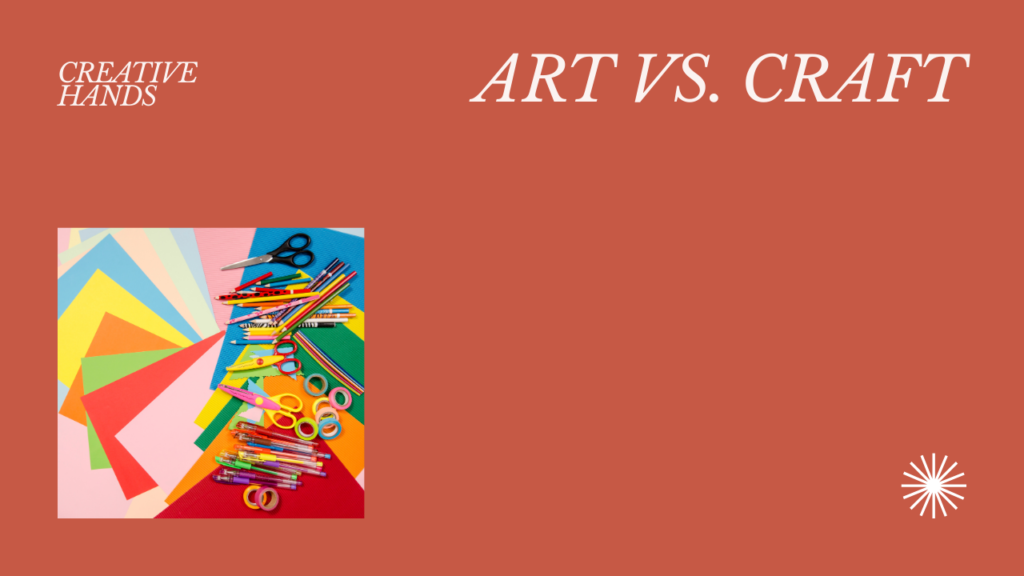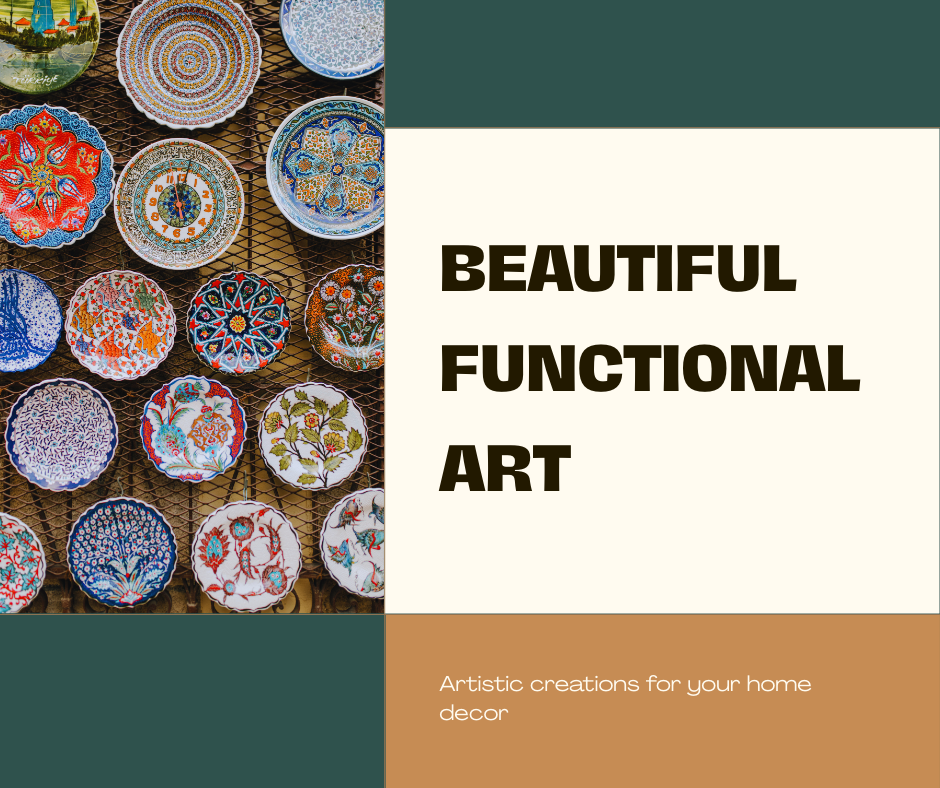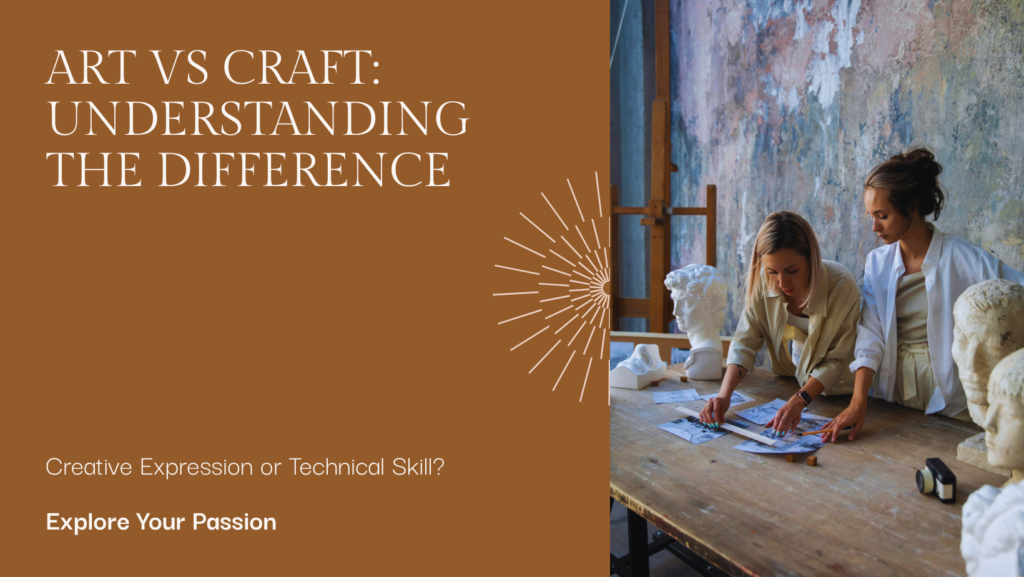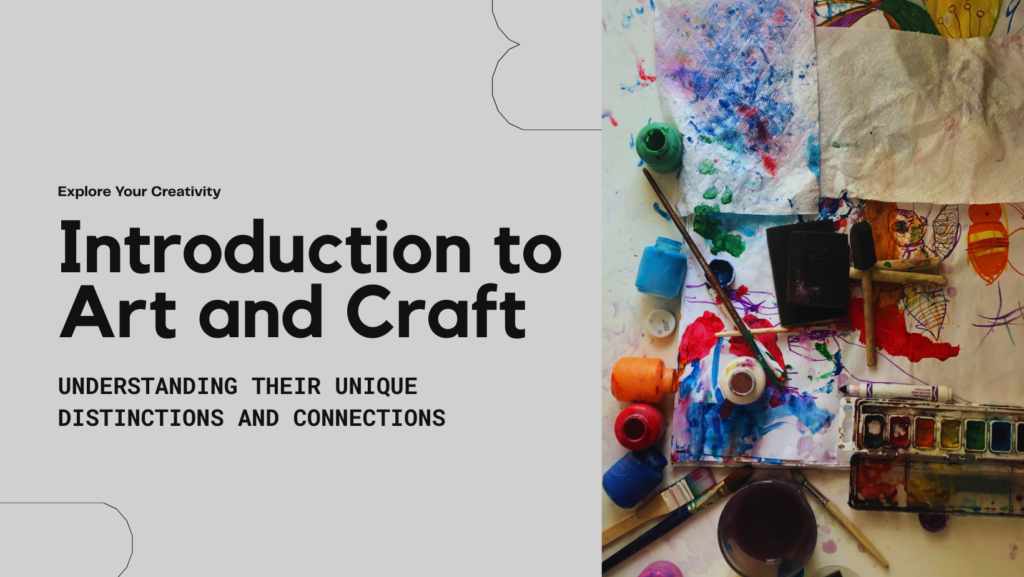Introduction to Art and Craft
Art and craft are two unique forms of creative expression that have been debated and discussed for centuries, with many artists and craftspeople exploring the differences and similarities between them.
The arts and crafts movement, which emerged in the late nineteenth century, emphasized the importance of traditional crafts and decorative arts in creating beautiful and functional objects.
Craft refers to the process of creating something using technical skills and craft techniques, often involving practice and the honing of skills through repetition, while art is often considered a more personal expression of human imagination and creativity.

Both art and craft require excellent technical proficiency and creative practices, but they differ in their intended purpose and emotional power. Artistic expression serves as a manifestation of an artist’s vision, emphasizing that art is rooted in the original concepts and imaginative processes of the creator.
Fine art is a type of artwork that is created primarily for its aesthetic value and emotional power, emphasizing inherent creativity and personal expression, rather than for a practical function or domestic use.
Fine art can take many forms, including painting, sculpture, photography, and ceramics, and is often a product of human creativity combined with craft, resulting in unique artistic expressions that arise from imagination.
The definition of fine art has evolved over time, with many artists pushing the boundaries of what is considered “art” and challenging traditional notions of beauty and creativity. These artworks are often displayed in museums and galleries, where they are preserved and showcased for public appreciation.
Fine craft, on the other hand, refers to the creation of beautiful and functional objects using traditional crafts and technical skills.
The Arts and Crafts Movement

The arts and crafts movement was a cultural and artistic movement that emerged in the late nineteenth century, emphasizing the importance of traditional crafts and decorative arts in response to the industrial revolution, which threatened traditional craftsmanship.
The movement was inspired by the ideas of William Morris and John Ruskin, who believed in the value of handmade objects and the importance of human imagination and creativity. They also promoted a structured course for apprentices to master crafts and arts, ensuring the transmission of skills and values.
The arts and crafts movement led to the development of new styles and techniques, including art nouveau and the craftsman style, and influenced the work of many artists and craftspeople. In the twentieth century, the idea of the designer also being the maker became a significant aspect of craftsmanship, reflecting debates on the separation of design and execution among artists and their followers.
The movement’s emphasis on traditional crafts and decorative arts helped to preserve many traditional craft skills and techniques that might have otherwise been lost.
Decorative Arts and Craft

Decorative arts and craft refer to the creation of beautiful and functional objects for domestic use, such as pottery, textiles, and furniture, emphasizing the relationship between craft and decorative arts.
Decorative arts and craft often involve the use of traditional crafts and technical skills, such as woodworking, weaving, and ceramics. Crafts are integral to various cultures, reflecting societal values and traditions.
The decorative arts and craft movement was closely tied to the arts and crafts movement, and emphasized the importance of beauty and functionality in everyday objects.
Many artists and craftspeople have explored the relationship between decorative arts and craft, and the ways in which they can be used to create a beautiful piece of decorative art that is both aesthetically pleasing and technically demanding.
The Difference Between Art

The distinction between art and craft is often debated, with some arguing that art is a form of creative expression, while craft is a technical skill. Art is typically associated with fine art, such as paintings, sculptures, and installations, which are created to evoke emotions and convey ideas. These forms of art are often celebrated for their ability to inspire and provoke thought, transcending practical function to touch the human spirit.
Craft, on the other hand, refers to decorative arts, such as pottery, textiles, and woodworking, which are created for functional or aesthetic purposes. The arts and crafts movement, which emerged in the late 19th century, emphasized the importance of craftsmanship and the value of handmade objects. This movement sought to elevate the status of craft by highlighting the beauty and skill involved in creating functional objects.
Fine art is often considered to be a higher form of art, while craft is seen as a more practical and technical pursuit. However, this distinction is not always clear-cut. Many artists and craftspeople blur the lines between art and craft, incorporating craft techniques into their work to enhance its depth and meaning. The use of technical skills and craftsmanship can be an essential part of the creative process, and many artists find that these elements add a new dimension to their work.
The concept of art vs craft is complex and multifaceted, and it continues to evolve as new technologies and mediums emerge. The appreciation of art and craft is subjective, and what one person considers art, another may see as craft. Ultimately, the difference between art and craft lies in the intention and purpose behind the creation, as well as the cultural and historical context in which it is produced. This ongoing dialogue enriches our understanding and appreciation of both forms of creative expression.
Craft Considered Art

Craft has long been considered a lesser form of art, but in recent years, there has been a growing recognition of the value and importance of craft as an art form. Many crafts, such as pottery, textiles, and woodworking, require a high level of technical skill and creativity, and can be just as expressive and emotionally powerful as fine art.
The arts and crafts movement, which emphasized the importance of handmade objects and the value of craftsmanship, helped to elevate the status of craft as an art form. Today, many museums and galleries recognize craft as a legitimate form of art, exhibiting craft pieces alongside fine art. This recognition underscores the intricate craftsmanship and creative vision that go into crafting functional objects that are also aesthetically pleasing.
The use of craft techniques, such as weaving, pottery, and woodworking, can add a new level of depth and meaning to a work of art. Craft can also be a powerful way to express cultural and personal identity, preserving traditional skills and techniques that might otherwise be lost. The distinction between art and craft is not always clear-cut, and many artists incorporate craft techniques into their work, creating pieces that challenge traditional notions of what constitutes art.
The appreciation of craft as an art form is growing, and it is now recognized as a valuable and important part of the art world. Craft can be a way to create functional objects that are also beautiful and expressive, adding a new level of meaning and significance to a work of art. The recognition of craft as an art form has helped to challenge traditional notions of what constitutes art, expanding our understanding of the creative process and the diverse ways in which human imagination and technical skill can be expressed.
Art and Craft: Connections and Distinctions

Art and craft are closely connected, with many artists and craftspeople exploring the boundaries between them.
While art is often considered a more personal expression of human imagination and creativity, craft has historically been viewed as a lower form of creativity compared to fine arts like painting or sculpture.
However, both art and craft require excellent technical skill and creative skills, and can be used to create beautiful and meaningful objects.
The distinction between art and craft is not always clear-cut, and many objects can be considered both art and craft, depending on the context and practical purpose.
📚 Additional Resources + Outbound Links
(grouped into one paragraph as requested!)
Explore more on History of the Arts and Crafts Movement, Fine Art vs Decorative Art, William Morris and Craft Revival, Art Nouveau and Craft Styles, and Modern Craft Appreciation.

🌸✨ What’s Your Next Creative Journey?
Will you explore the expressive world of fine art or master the timeless beauty of craft?
Whichever path you choose, your imagination is the first step.





